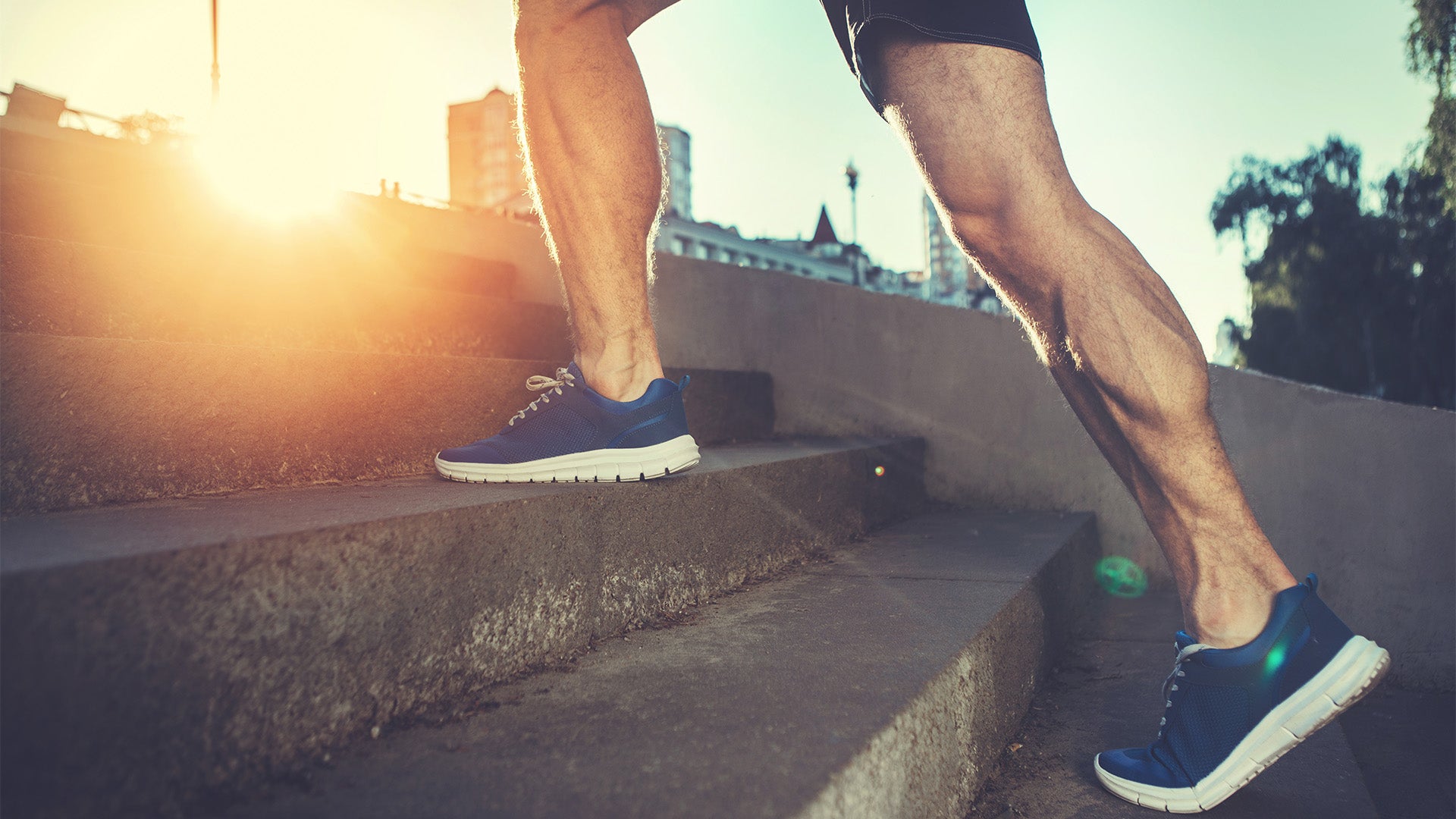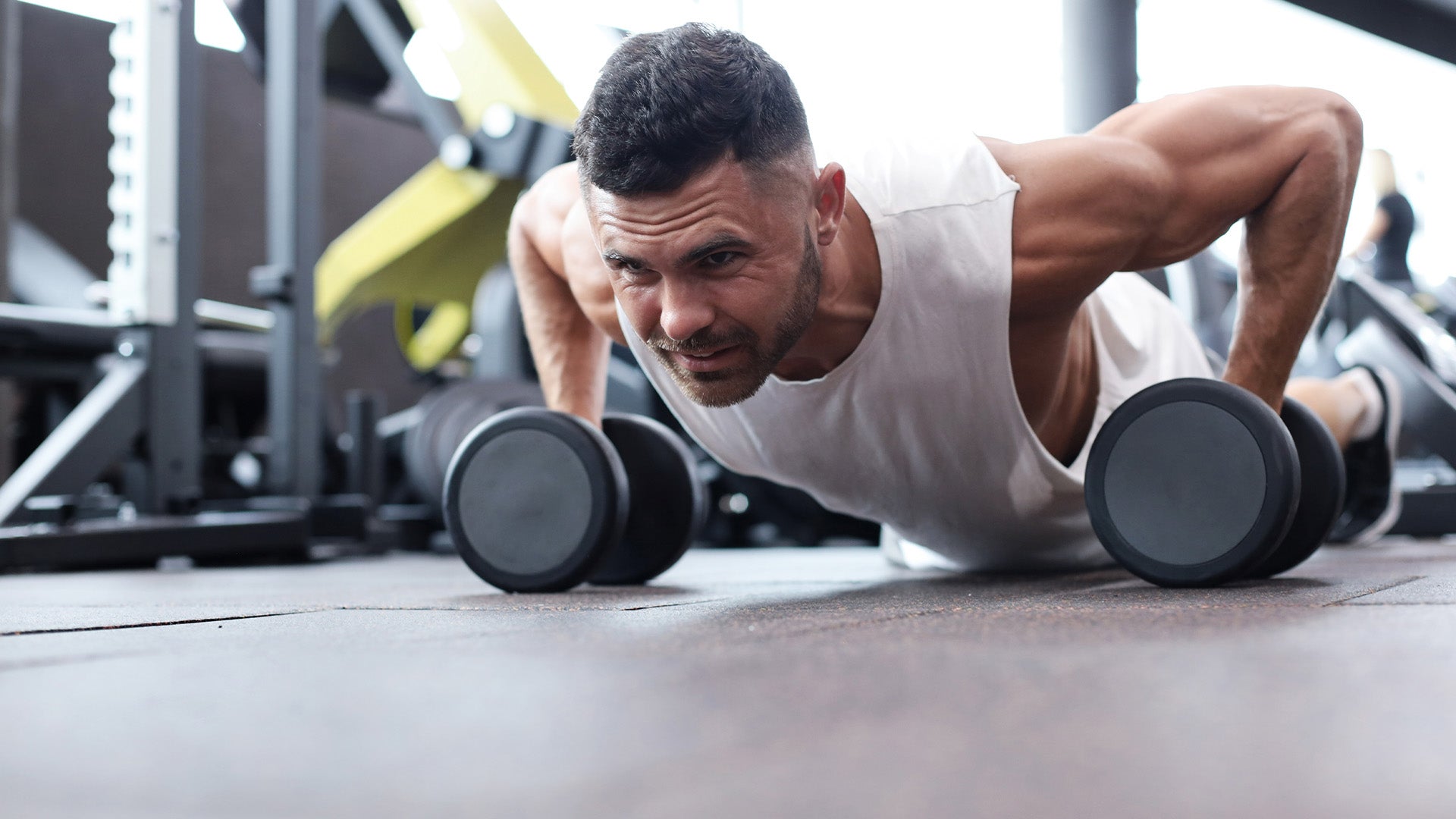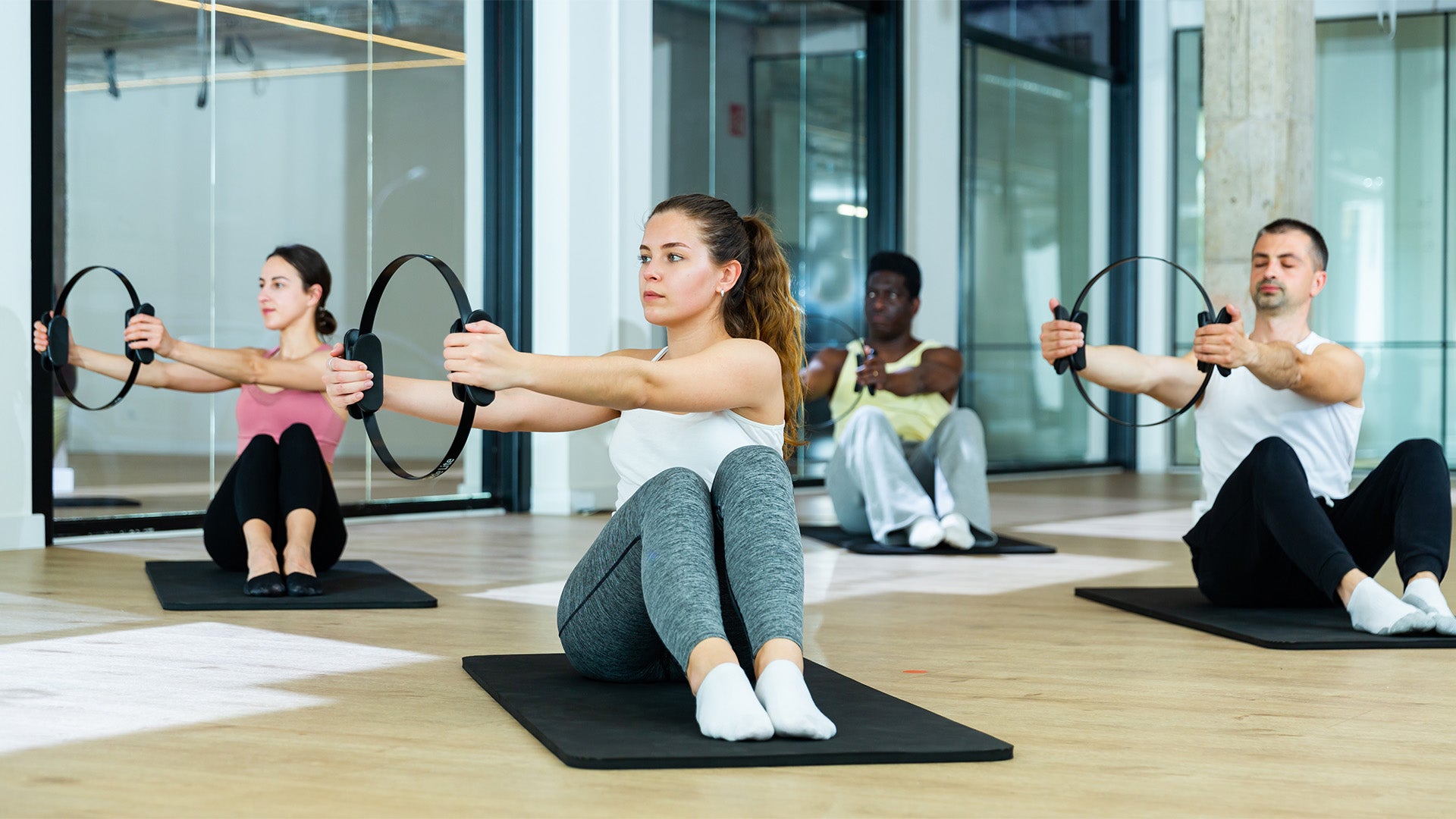What Muscles Do Deadlifts Work?
Deadlifts can work multiple major muscle groups at once, allowing you to build strength throughout your body — and that’s what makes them one of our favorite workouts.
Below we will take a closer look at exactly what a deadlift is, which muscles deadlifts work, and the different deadlift variations you can add to your weightlifting workout routine.
What Is a Deadlift?
Deadlifts are considered a functional exercise that helps strengthen the muscles you need to perform daily tasks, such as bending down to pick things up. It is a multi-joint resistance movement used to develop maximal concentric strength without the aid of an eccentric counter-movement. The deadlift exercise is performed by lifting a specific amount of heavy weight off the ground that is not moving.
Deadlifting, along with squats and bench presses, is the main lift used in powerlifting and CrossFit. The exercise increases total body strength and power, especially in the posterior chain.
What Muscle Groups Do Deadlifts Target?
Deadlifts are considered a compound exercise, meaning you will work many muscle groups — mainly in the posterior chain. Starting from your upper back to your lower back, you will be utilizing your traps, rhomboids, lats, and erector spinae. Bonus, deadlifts also improve your grip strength, strengthen your abs, and strengthen your biceps.
When it comes to lower body function, deadlifts work your hamstrings, glutes, and as a secondary mover, your quads.
Below is a detailed breakdown of the muscles used when performing the deadlift exercise properly.
Erector Spinae
The erector spinae is a group of muscles and tendons that connect your entire back from your hips and lower back to the base of your skull. These muscles line both sides of your spine and are responsible for many functions such as side-to-side rotations and lateral flexion and extension.
Not only does your erector spinae play a vital role in your back, but it also plays a huge role in your core. The erector spinae works to link your abdominal muscles and oblique muscles to help improve stabilization and overall function of the upper body.
Deadlift help strengthen the erector spinae and deep back muscles. When you pull the heavy weight from the hinged position, your lats, trapezius (traps), and other upper back muscles are engaged when proper form is being used.
By strengthening these muscles, you are able to better protect your spine and increase your overall core strength and stability.
Rhomboids
The rhomboids are the muscles in the upper inner part of your back and lower neck. The rhomboid muscle is engaged during the starting position of your lift and remains engaged throughout the entire lift as it helps keep the proper positioning for the shoulder and shoulder blades.
By maintaining the proper deadlift form, the rhomboid muscles will help keep the back straight and keep the shoulders upright rather than rounded during the locked-out position of the lift.
Gluteals and Hamstrings
Your gluteal muscle, also known as your glutes, consists of three muscle groups: gluteus maximus, gluteus medius, and gluteus minimus.
Many people don’t realize how much of a role your glutes play in your daily function. If you are underactive or are very sedentary, then chances are your glutes muscles lengthened and are weak.
Deadlifting is a great exercise that targets your glutes and hamstrings. The hinging motion helps activate your gluteus maximus as well as your hamstrings. Building muscle strength in your glutes and hamstrings will lead to more strength and power in your workouts but also improve your overall health when completing daily activities.
Quadriceps
Your quads are one of the major muscle groups in your lower body. Deadlifts help build the quad muscles as you bring the bar up from the ground because your quadriceps become fully engaged.
Building your quad muscles can help prompt overall leg strength and power. The more strength built in the quads, the more stable your knee joints will be, which can help protect you from injury.
What Are Some Different Deadlift Variations?
Many variations to the conventional deadlift help you target various muscle groups to help improve strength and muscle mass. Also, some deadlift variations help individuals with recurring injuries, mobility issues, or chronic back pain.
These variations can also be modified to fit the confines of equipment and space that is available to you. You can complete these variations with a hex bar, barbell, dumbbells, or kettlebells.
Below we will discuss different deadlift variations that will help improve your overall strength and muscle mass:
Barbell Deadlift
The barbell deadlift is a standard deadlift that is considered a compound movement. The barbell deadlift activates the glutes and spine.
Strength and power athletes prefer the barbell deadlift to help increase their overall strength, add quality muscle mass to the back, hamstrings, and glutes, and improve sport-specific performance.
This variation uses a traditional barbell loaded with the appropriate weight. The barbell is then placed on the ground in front of you, even with your feet and close to your shins. When getting into starting position, you must squat downwards and back, keeping your arms straight and your hands shoulder-width apart.
Romanian Deadlift
Romanian deadlifts “RDLs” can be performed with a barbell, kettlebell, or dumbbells. This variation is great for keeping the muscles engaged and under tension through the entire lift because you only return the weight to the floor at the end of your set.
To complete this variation, you place the weight in front of you and stand with your feet shoulder-width apart. After grasping the barbell and getting into starting position, slowly move into the standing position. From the top of the movement, you only move the weight back down, mid-shin, and then return to a standing position. You repeat the rest of the reps in your set before returning the weight to the floor.
Sumo Deadlift
Sumo deadlifts are similar to a sumo squat. The main difference with his variation is your stance. When performing this exercise, your stance is wider to change up the movement. By moving downwards in a wider stance, the load on your lower back is reduced. This variation helps those dealing with back pain or those looking to switch up from the traditional deadlift.
Trap Bar Deadlift
The trap bar deadlift is a good alternative to the barbell deadlifts. This variation is perfect for beginners and is even loved by many athletes as it is a very natural lifting position. The trap bar deadlift places a greater load on the lower body, such as the glutes, hamstrings, back, and quadriceps.
Stiff Leg Deadlift
The stiff leg deadlift is a variation that puts the knees at a slightly increased extension angle which places greater loads on the hamstrings. This variation is great for lifters trying to tone their hamstrings and improve hamstring strength. This is also ideal for powerlifters and strength athletes looking for an accessory exercise to incorporate into their workout routine to maximize their deadlift performance.
Deficit Deadlift
The deficit deadlift is performed by standing on a plate or elevated surface. This variation is used when addressing hip drive from the floor, weak leg drive in the deadlift, and forms breakdowns right after the setup. Deficit deadlifts can also help improve your range of motion.
Key Takeaways
No matter your goals, there are many benefits of incorporating deadlifts into your workout routine. For starters, deadlifts are fantastic for building total body strength and increasing muscle mass.
And with the Speede Challenger, you can perform deadlifts more safely than with any traditional method. Plus, Speede's Excentric Mode allows you lift up to 50% heavier than with a barbell. Whether you're training with Speede or with your own equipment, deadlifts are a great way to improve sport-specific performance and longevity in everyday life.
Sources:
Deadlift : What's the goal? - Professional Baseball Strength & Conditioning Coaches Society.
What Muscles Do Deadlifts Work? We Asked Personal Trainers
How to Do the Deadlift for Muscle, Raw Strength, and Power | BarBend
An electromyographic analysis of sumo and conventional style deadlifts



